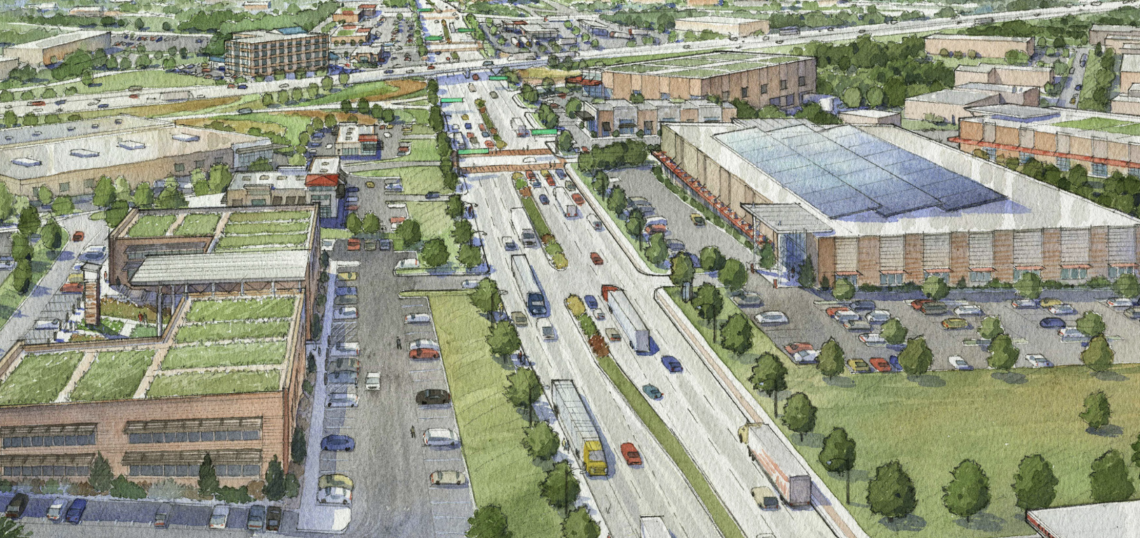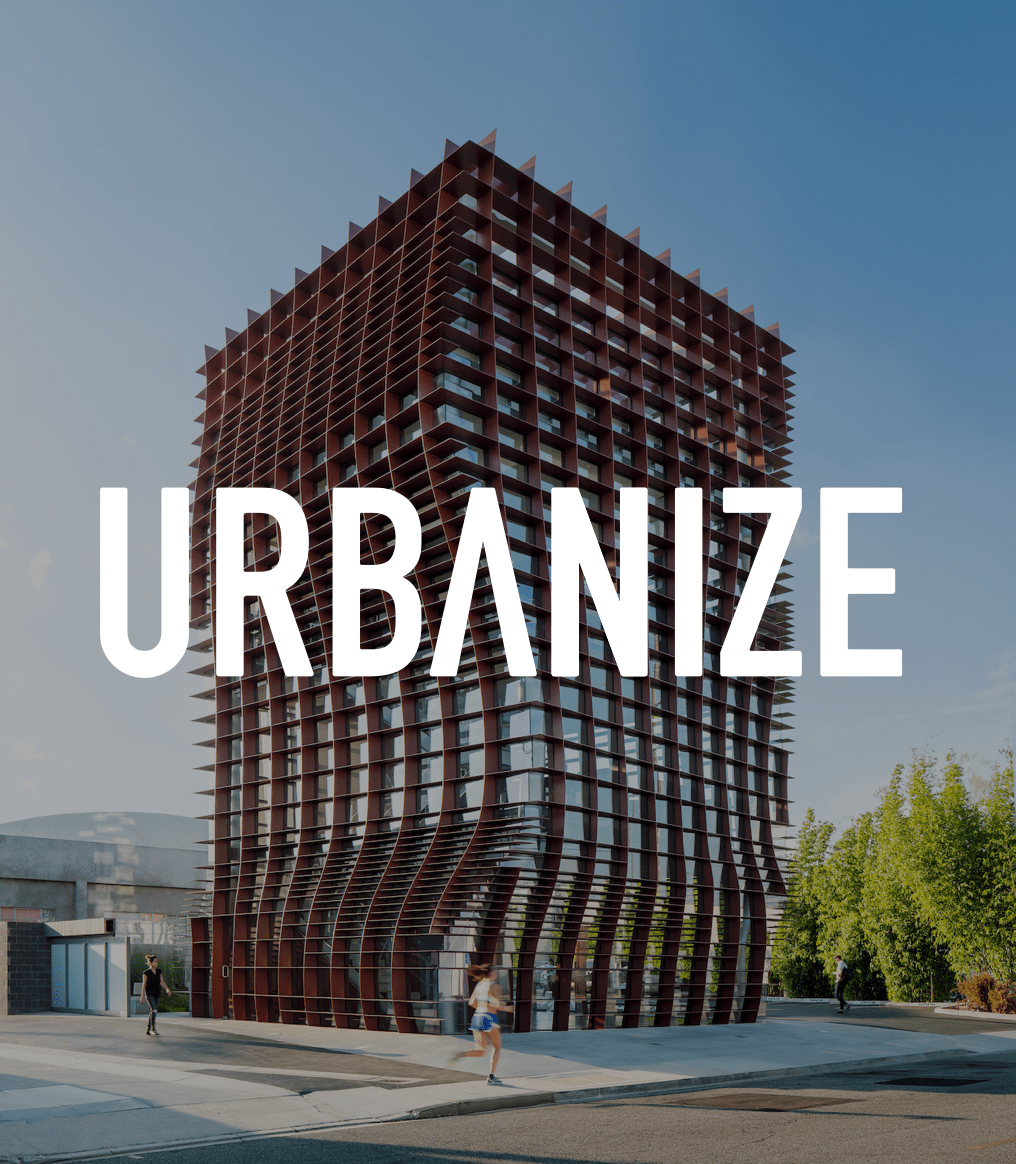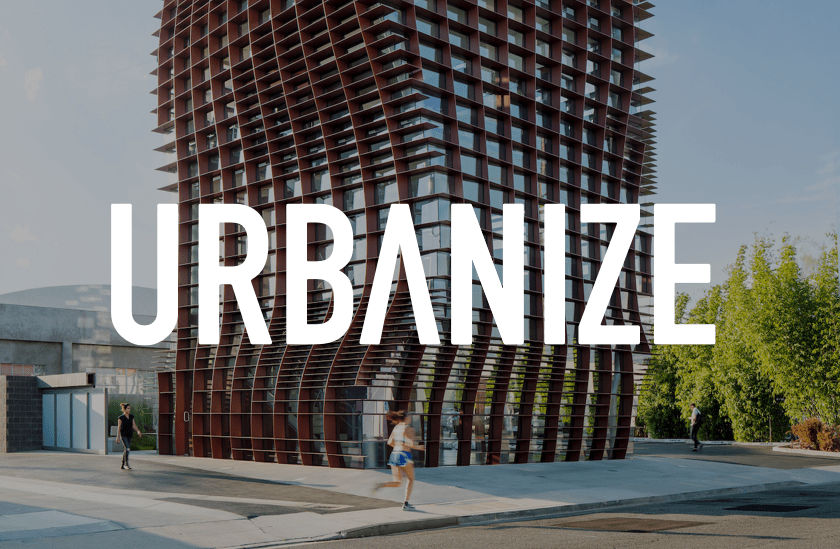When Googling the phrase “Fulton Industrial Boulevard,” the word “shooting” might still try to auto-populate (and for tragically good reasons), but the important commercial thoroughfare is no longer synonymous with the drug trade, prostitution, and worse, according to officials leading an extensive, years-long cleanup effort.
Stretching for roughly 12 miles along the far western reaches of Fulton County, from west of Buckhead to west of Atlanta’s airport, the Fulton Industrial Boulevard area has been a major economic driver for metro Atlanta since the 1960s.
In fact, today it’s considered the largest industrial district in the eastern United States, counting 52 million square feet of industrial space, 1,000 businesses, some 26,000 jobs, and $2.4 billion in payroll—plus strategic interstate and intermodal rail connections to make it all go.
But a decline in FIB’s reputation and safety record that began in the 1990s had reached a boiling point by 2010, when the area became notorious for one of the metro’s highest crime rates.
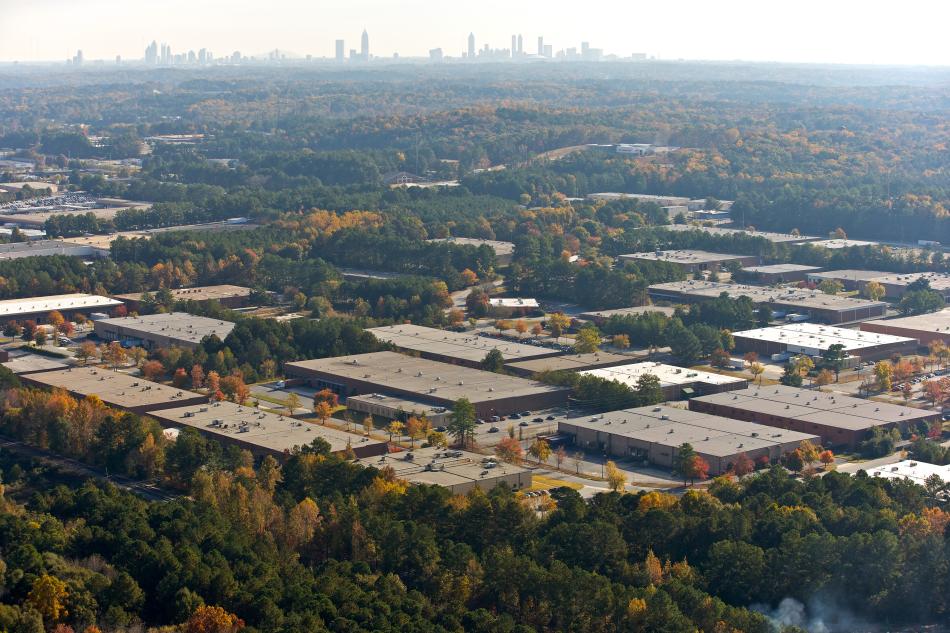 Overview of the massive, 12-mile industrial corridor as seen last decade. Courtesy of Fulton Industrial Boulevard Community Improvement District
Overview of the massive, 12-mile industrial corridor as seen last decade. Courtesy of Fulton Industrial Boulevard Community Improvement District
Desperate for change, commercial property owners that year founded (and agreed to fund) the self-taxing Fulton Industrial Community Improvement District in a public-private partnership. The results, according to CID leadership, have been drastic.
Public-safety initiatives geared toward cleaning up the FIB area have resulted in historically low crime rates—an 81 percent drop in overall crime since 2016, following steady declines each year, CID officials recently said.
“Today, property in the area is in demand and businesses are able to offer a safe environment for their employees,” Gil Prado, the CID’s executive director, said in an announcement.
So what’s working? A mix of high-tech crackdown efforts and more traditional ones, CID leaders say.
The tide began to change when a full-time public safety manager was hired in 2013, and CID heads began building partnerships with officials in Atlanta and the City of South Fulton, along with county and state leaders, to tamp down on illegal activity. Over the past decade, numerous problematic businesses—dilapidated and non-compliant hotels in particular—have been purged out of the corridor, according to CID officials.
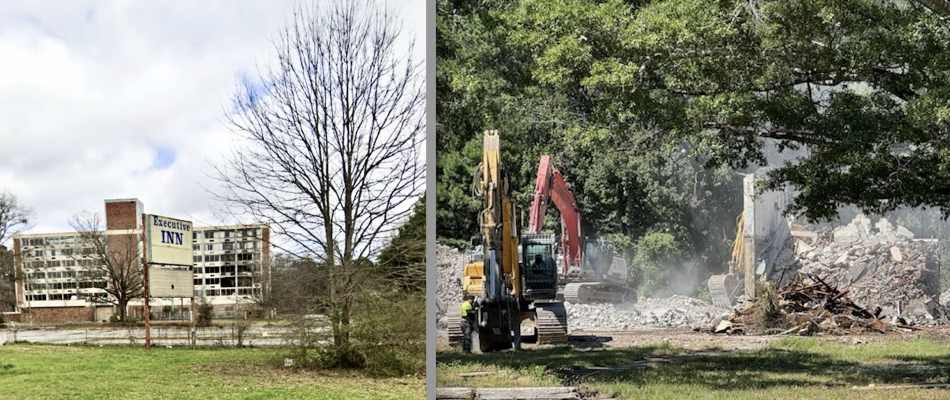 FIB's blighted Executive Inn (left) and its demolition in August. Courtesy of Fulton Industrial Boulevard Community Improvement District
FIB's blighted Executive Inn (left) and its demolition in August. Courtesy of Fulton Industrial Boulevard Community Improvement District
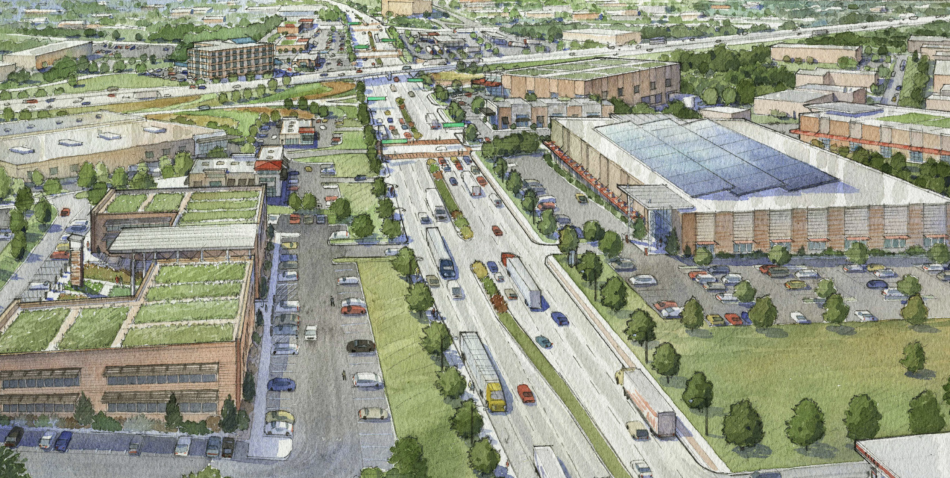 As outlined in an FIB master plan, a proposed government center and technical school and new industrial facilities represent one redevelopment vision for the corridor’s I-20 Gateway. Courtesy of Fulton Industrial Boulevard Community Improvement District
As outlined in an FIB master plan, a proposed government center and technical school and new industrial facilities represent one redevelopment vision for the corridor’s I-20 Gateway. Courtesy of Fulton Industrial Boulevard Community Improvement District
More techie methods began in 2017 when public-safety surveillance cameras were installed in the corridor, along with 34 license plate readers (22 of them introduced in 2023 alone), according to CID public safety manager Frank Mazzilli.
Last year, extra police patrols funded by the CID throughout the district amounted to 6,300 patrol hours. Other tools include a trespassing crackdown for private properties via an affidavit program.
Beautification efforts—from litter pickup and landscaping to the removal of encampments near interstate ramps—have further discouraged criminal activity, in the mode of the broken-windows theory, according to CID leadership.
“The public-safety efforts are part of a larger effort to improve the district and maintain commercial vitality and economic competitiveness,” said Prado. “The CID will continue to make public safety a priority to ensure the district is a desirable place to conduct business.”
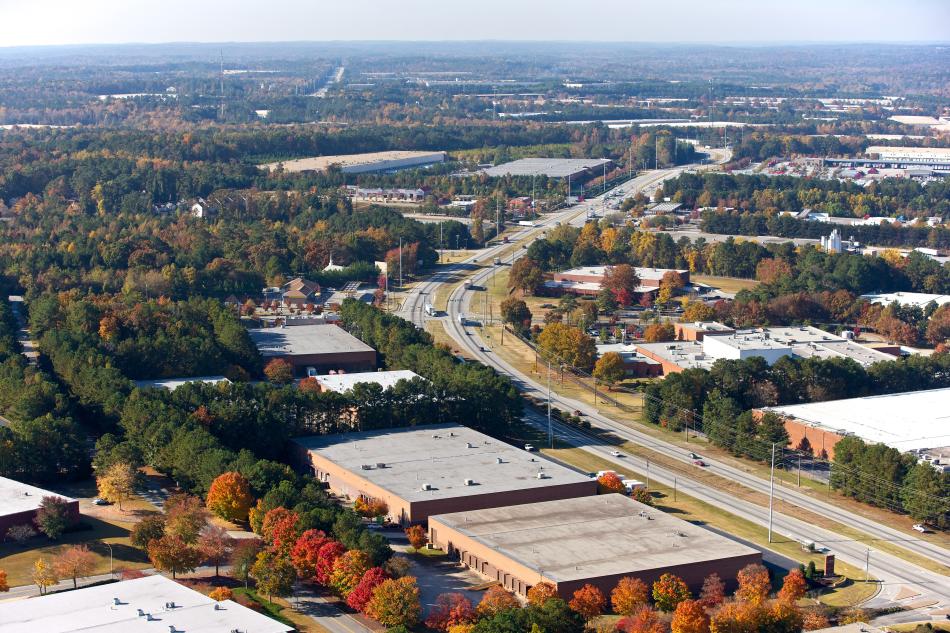 One section of the wending FIB corridor from above. Courtesy of Fulton Industrial Boulevard Community Improvement District
One section of the wending FIB corridor from above. Courtesy of Fulton Industrial Boulevard Community Improvement District
...
Follow us on social media:
Twitter / Facebook/and now: Instagram
• OTP news, discussion (Urbanize Atlanta)




